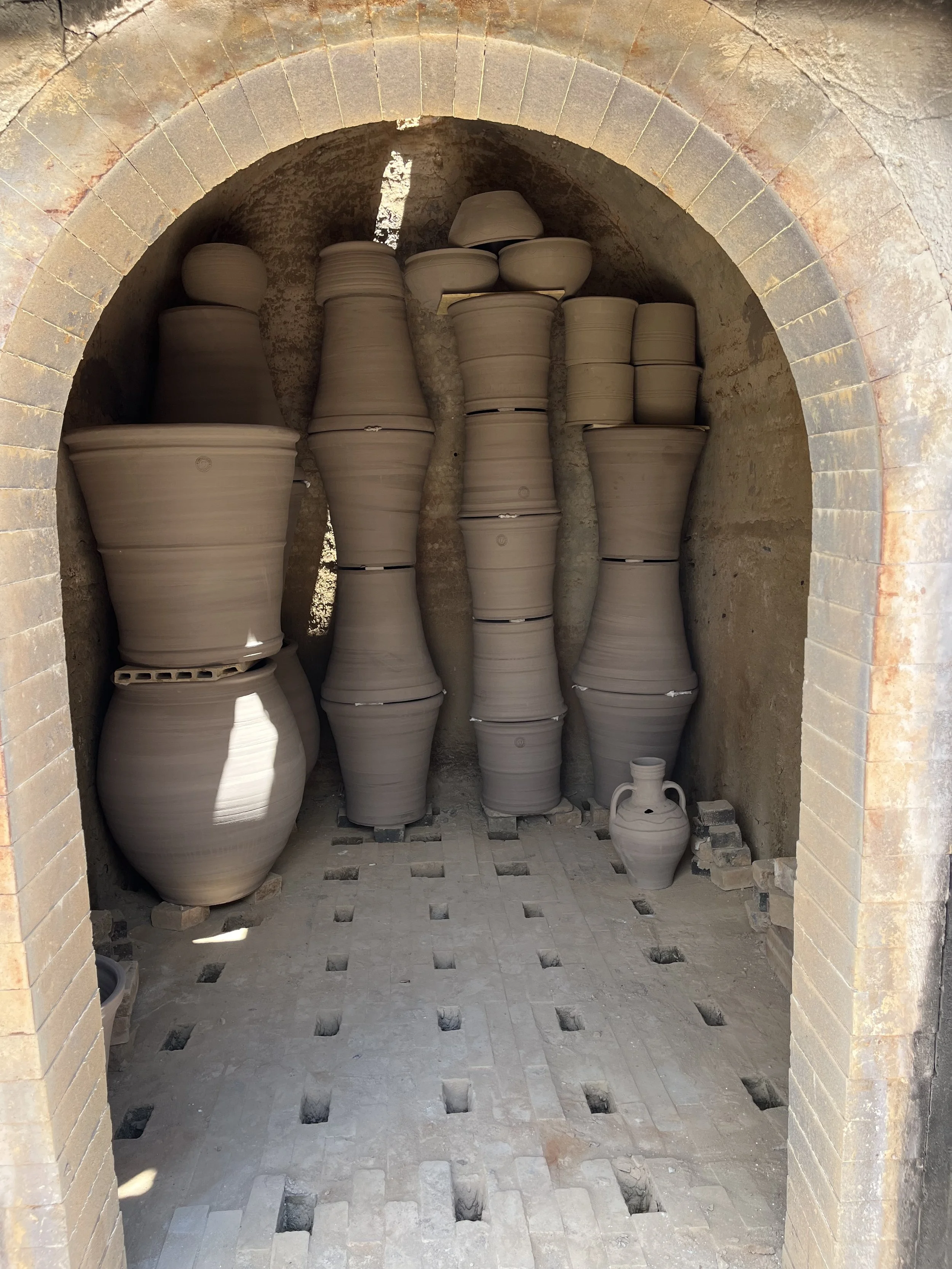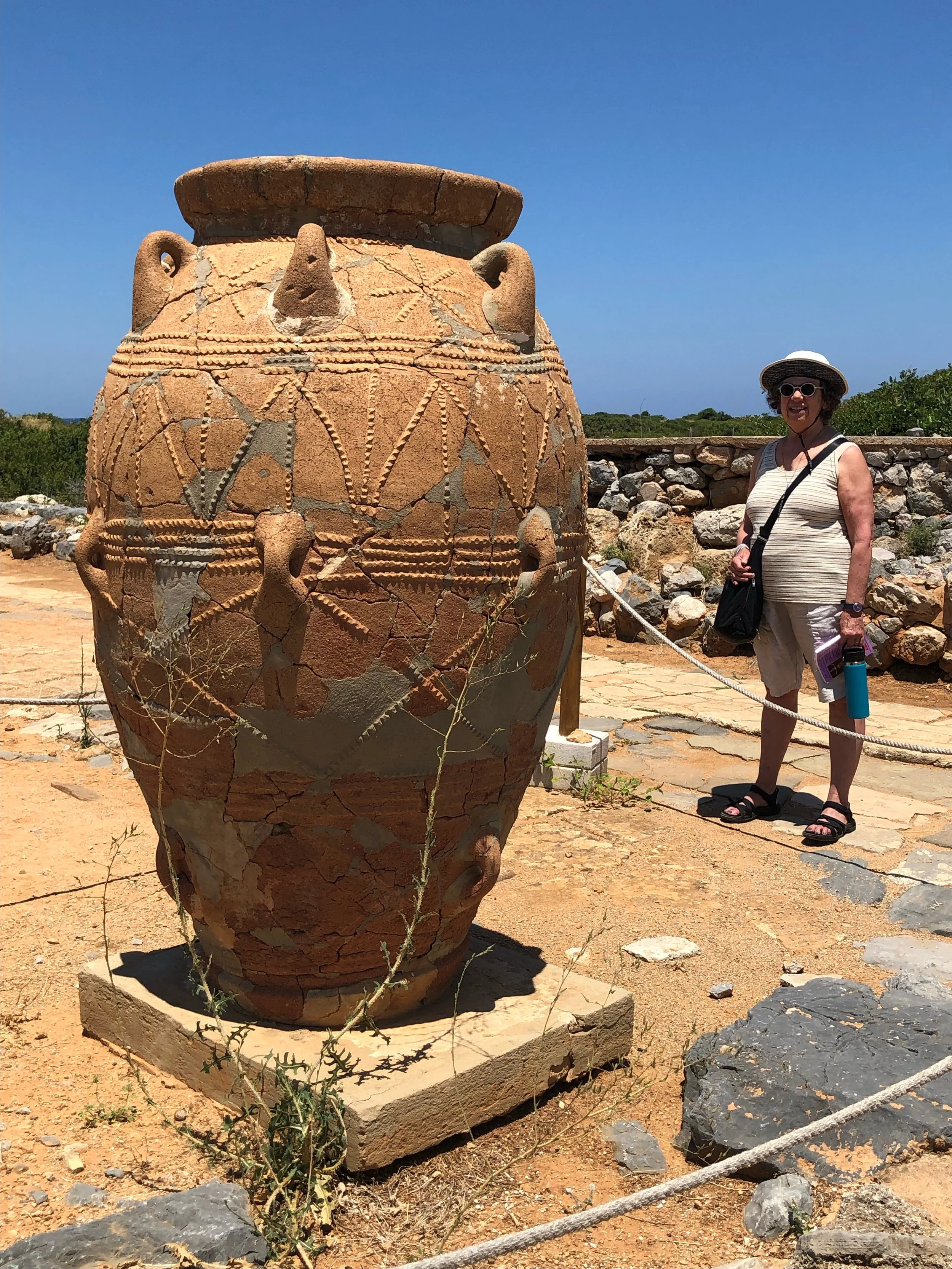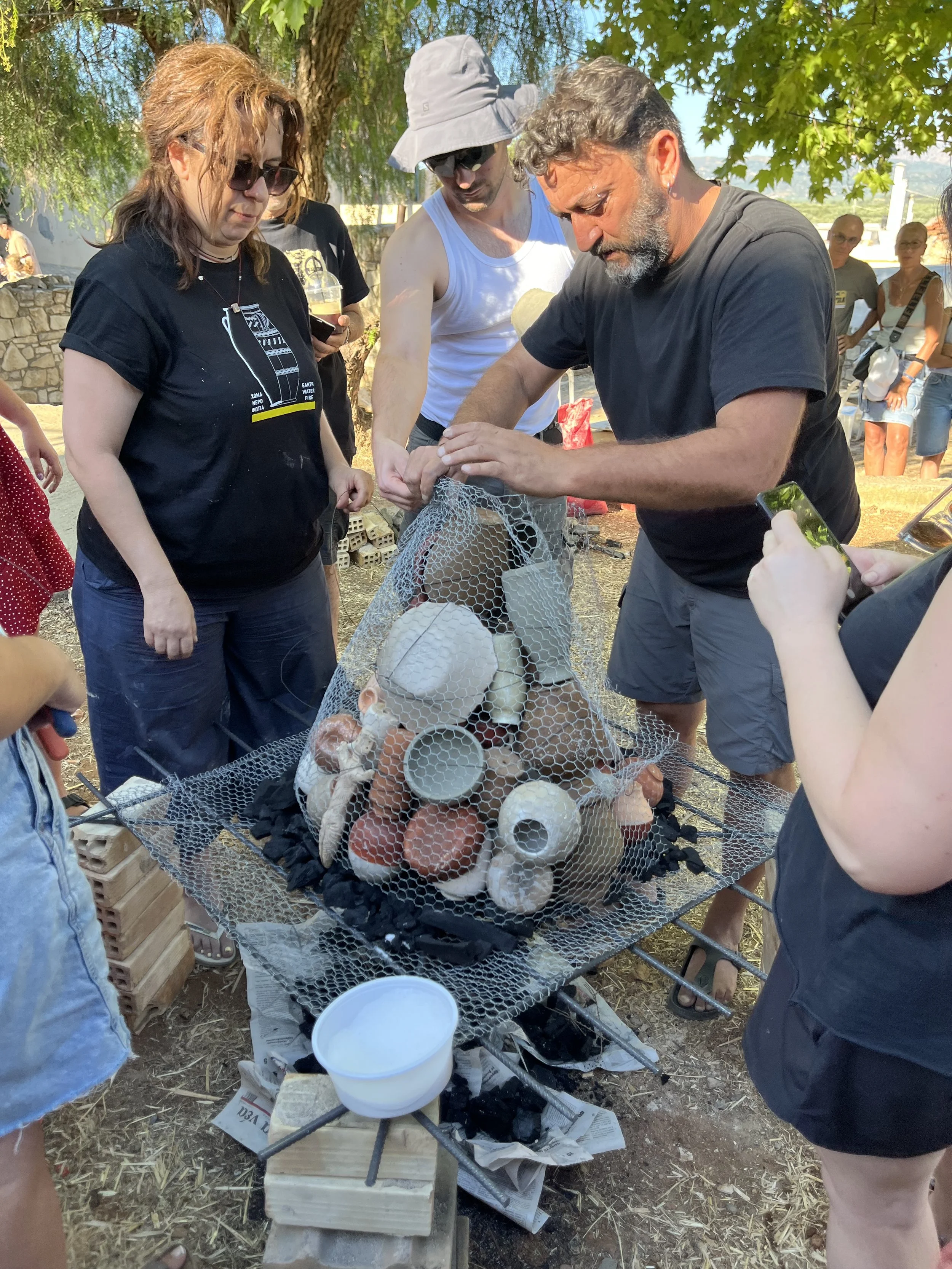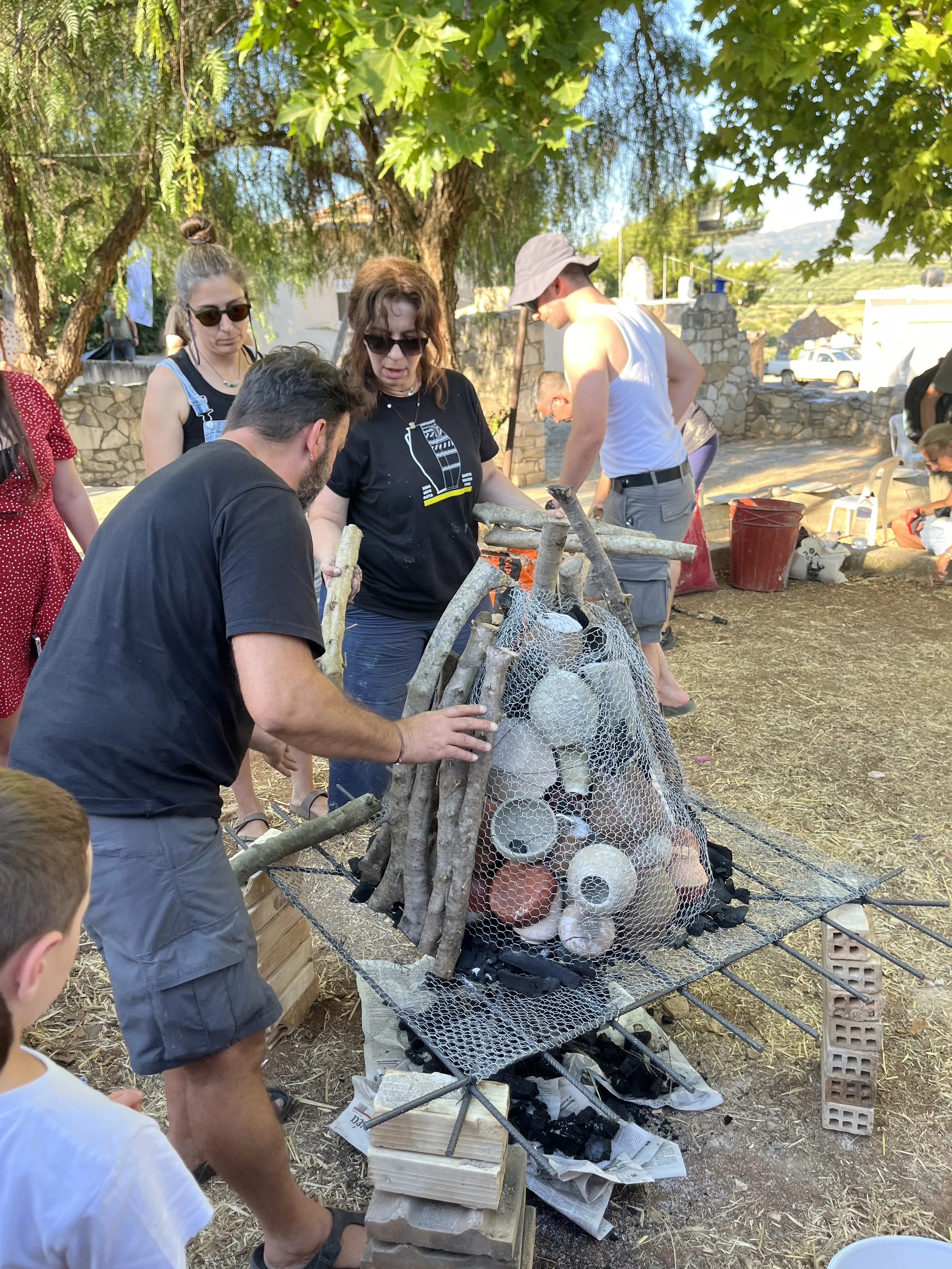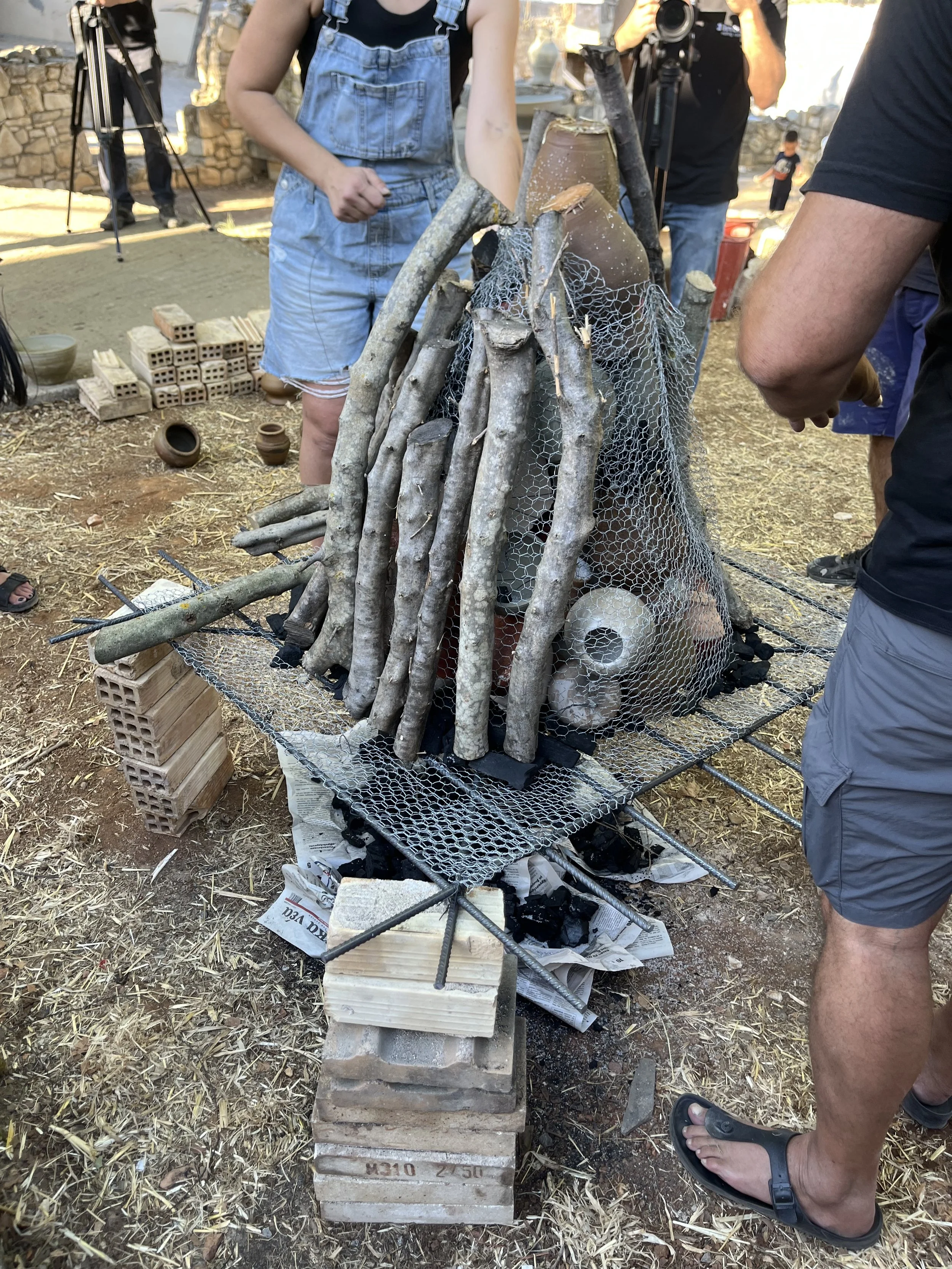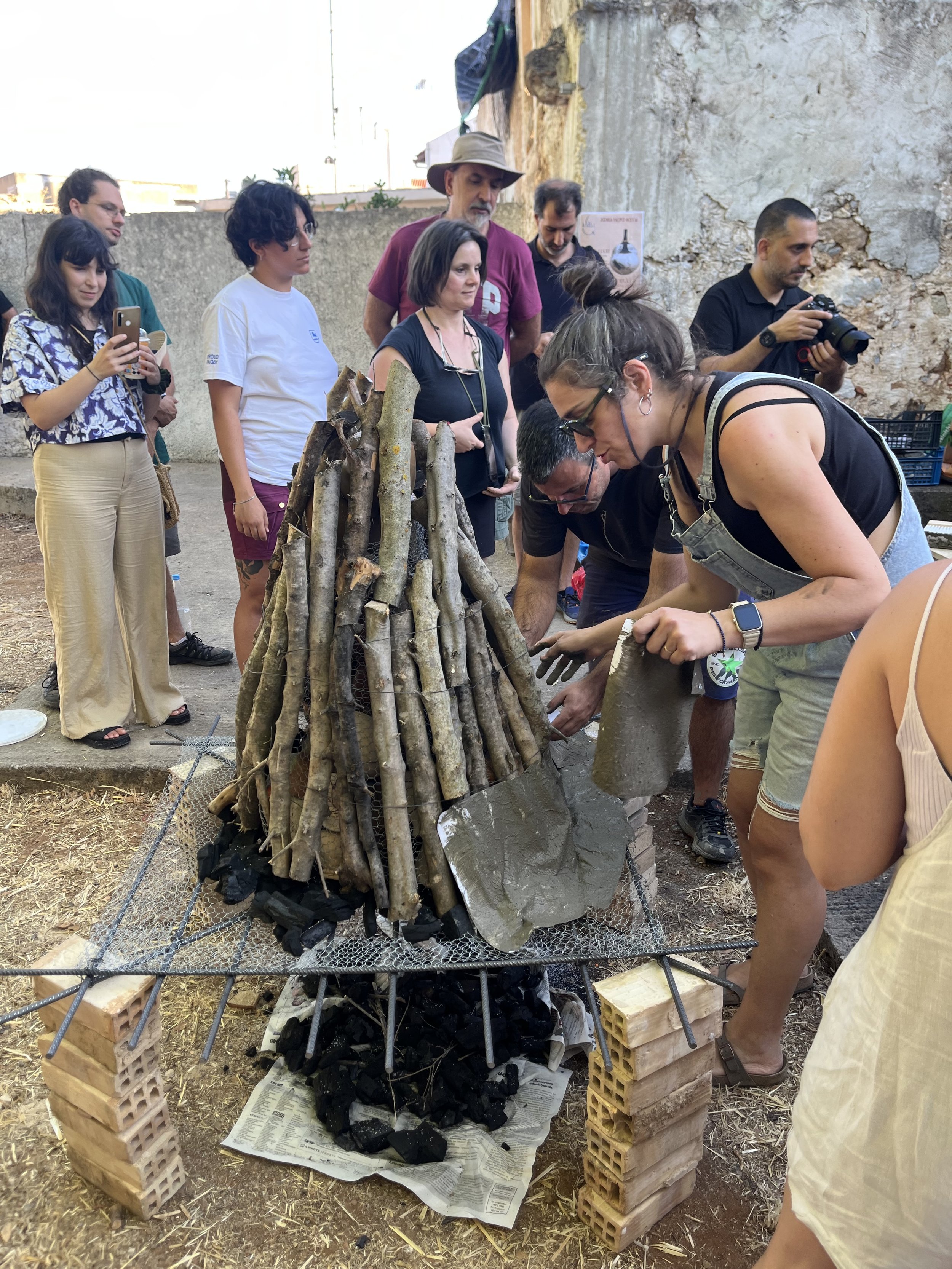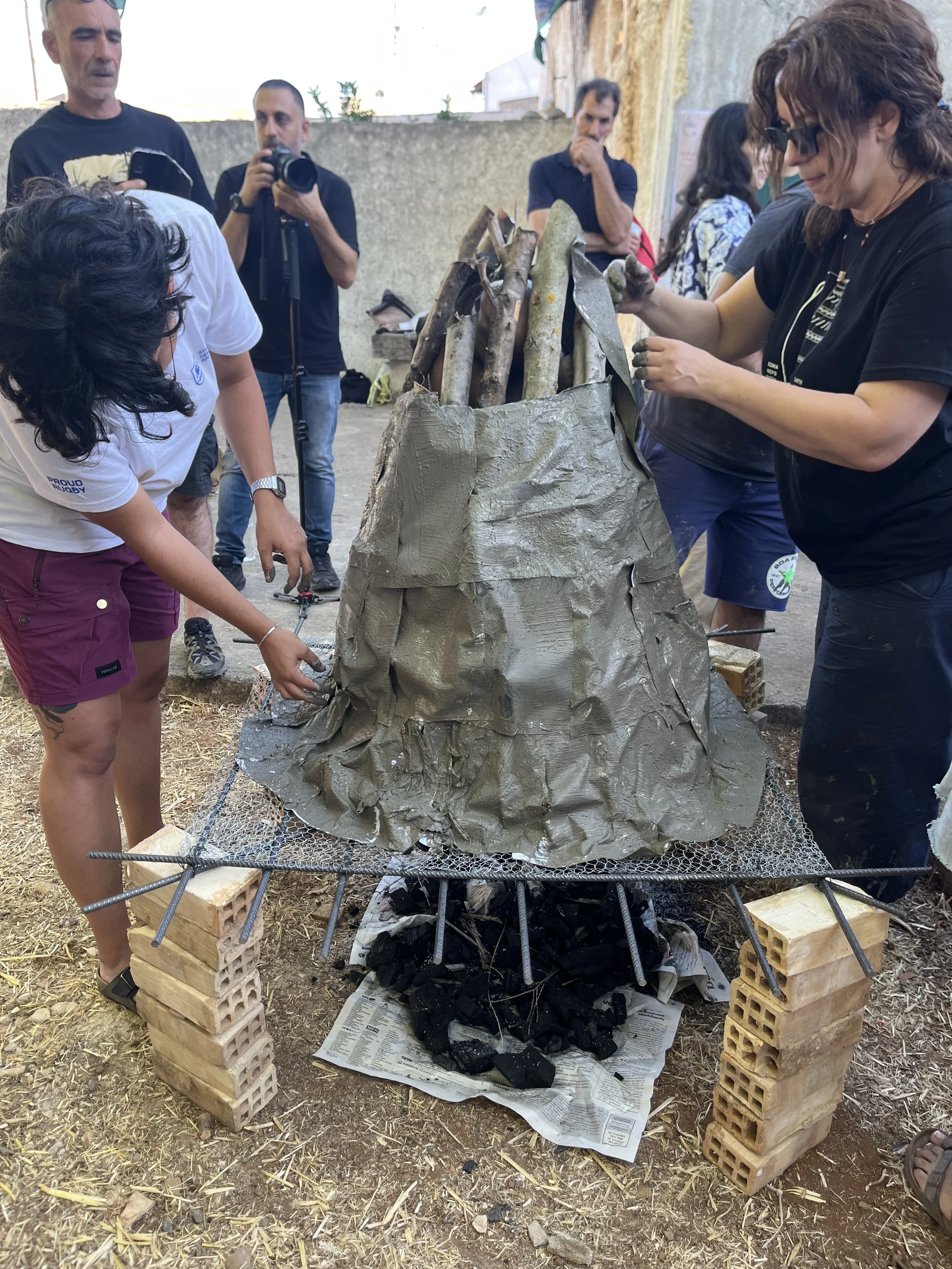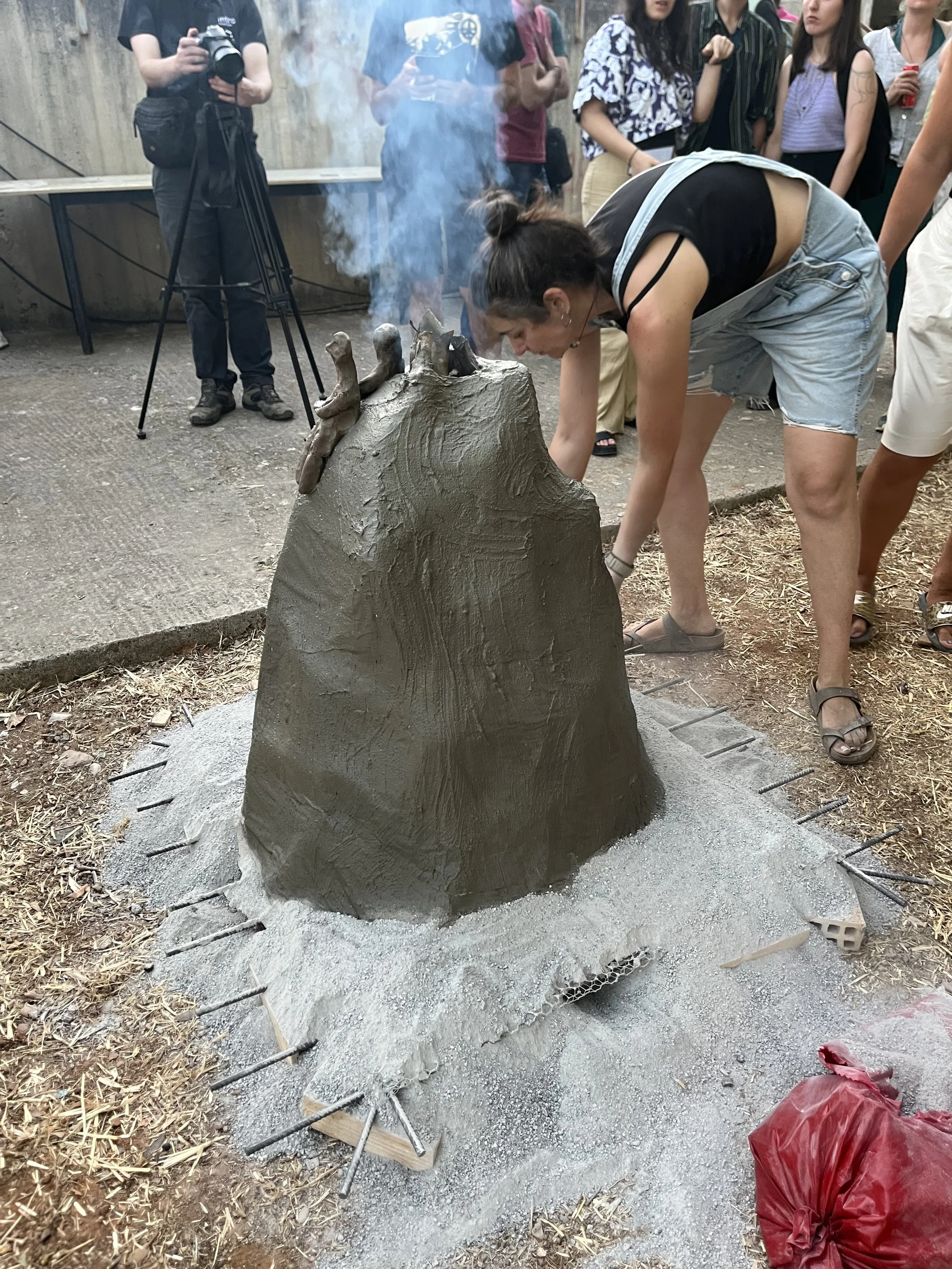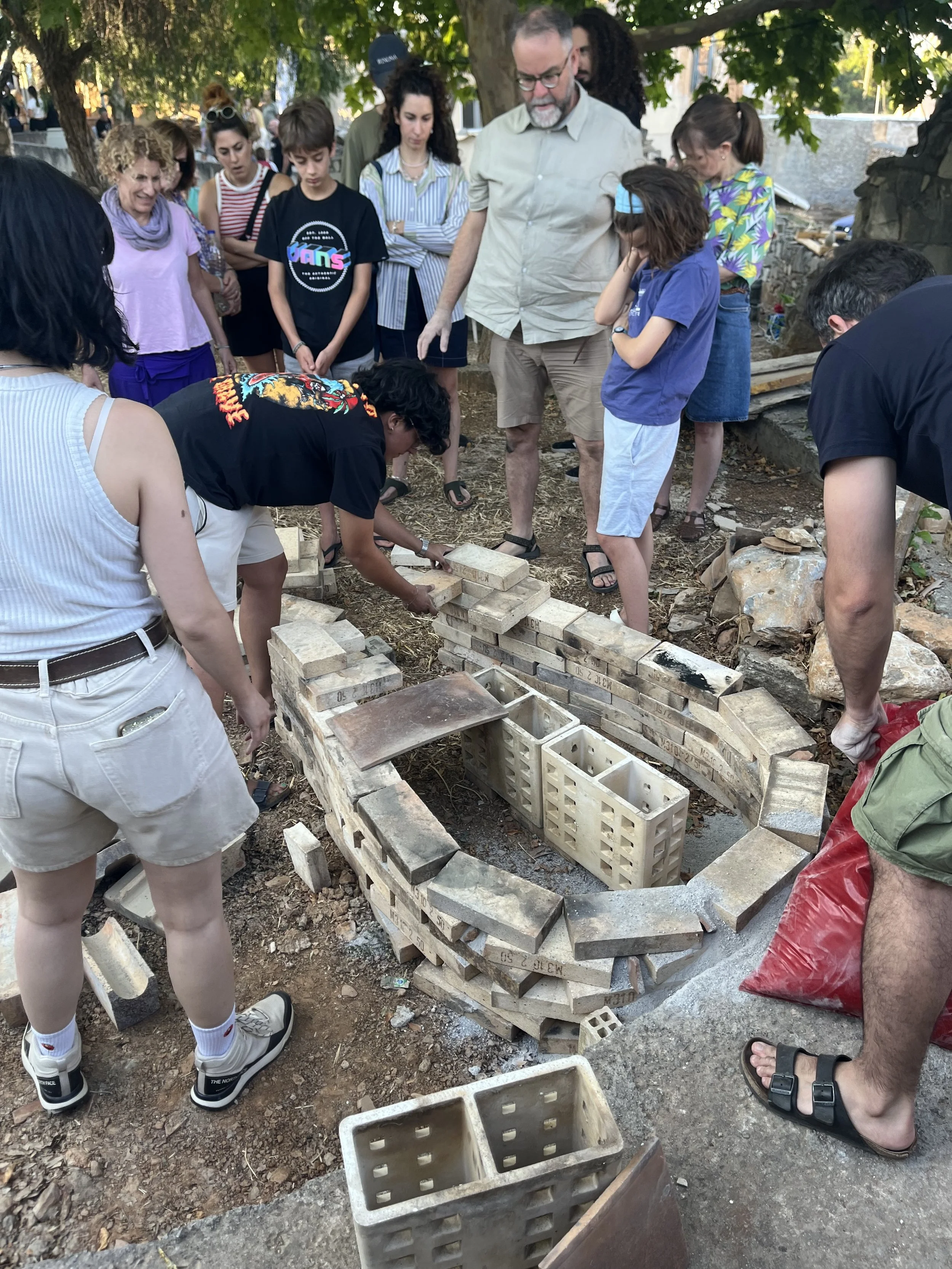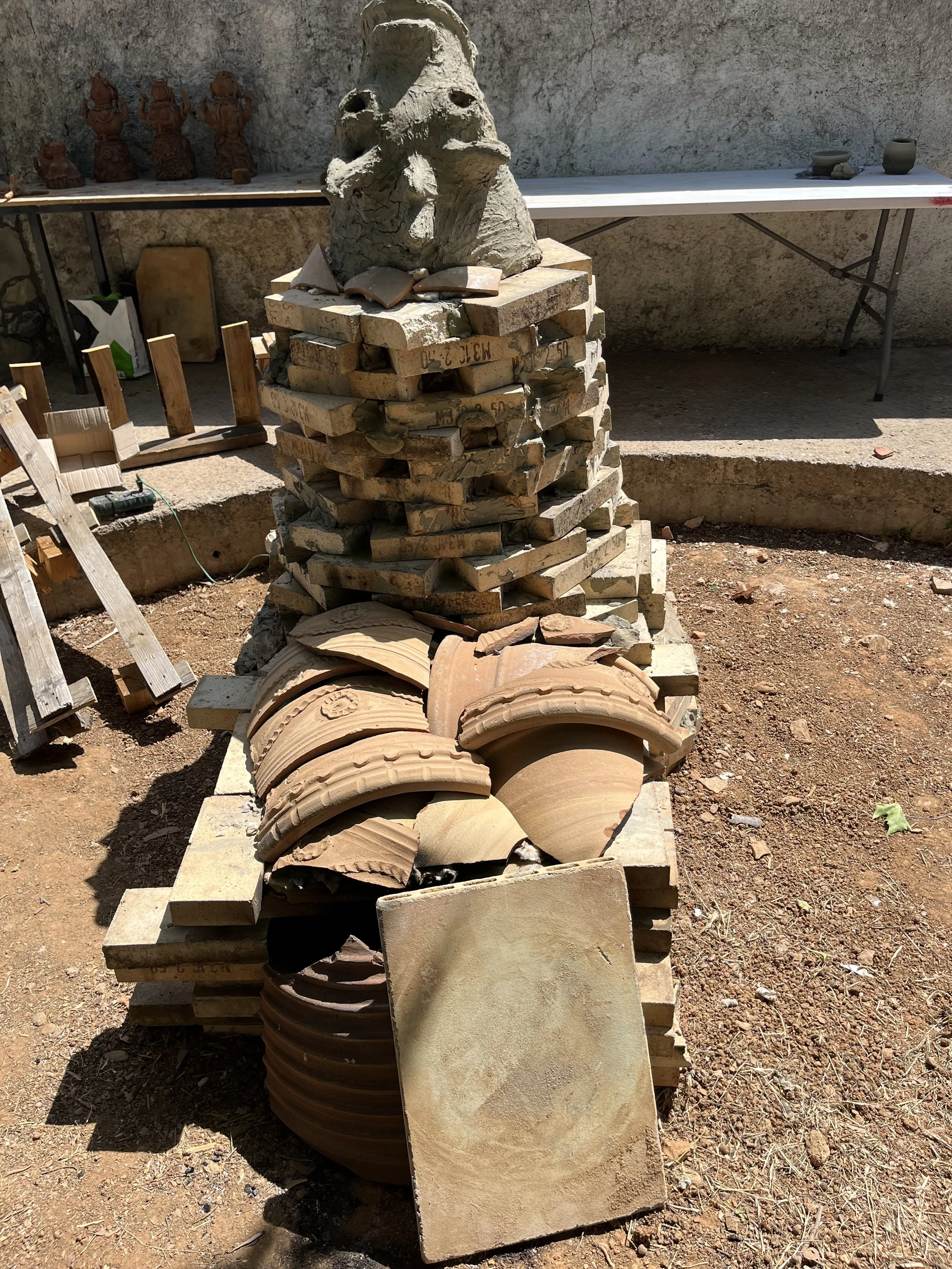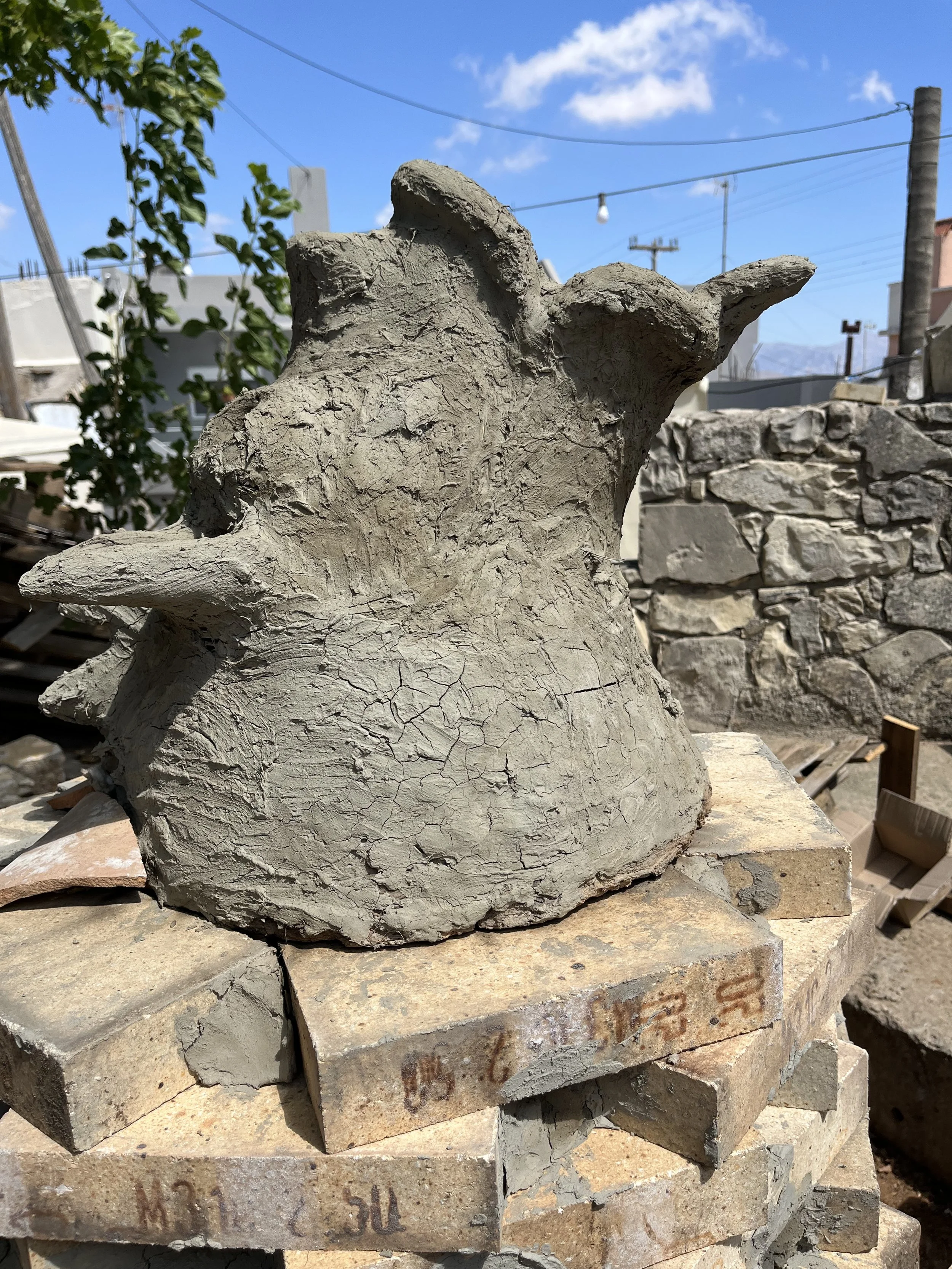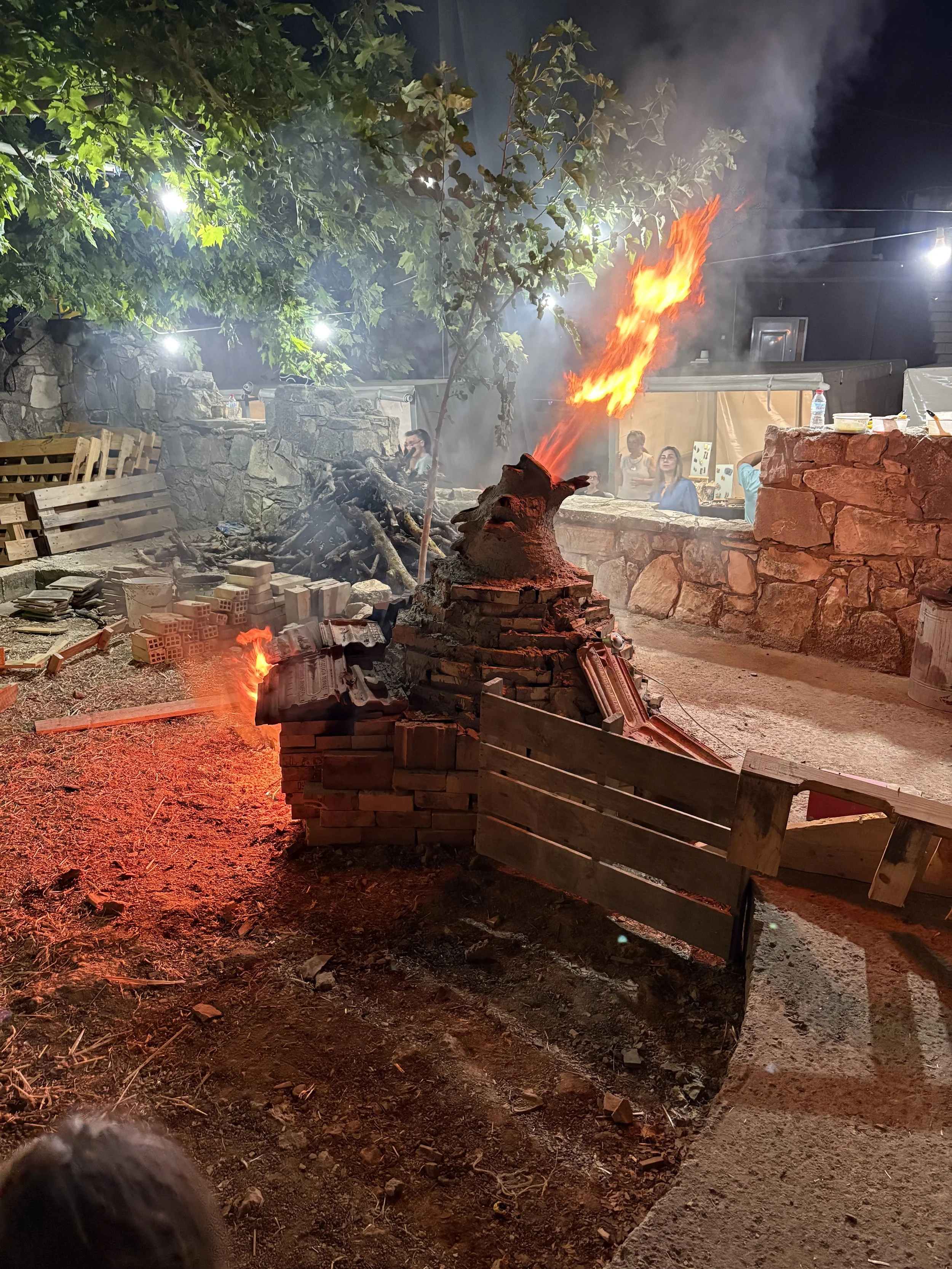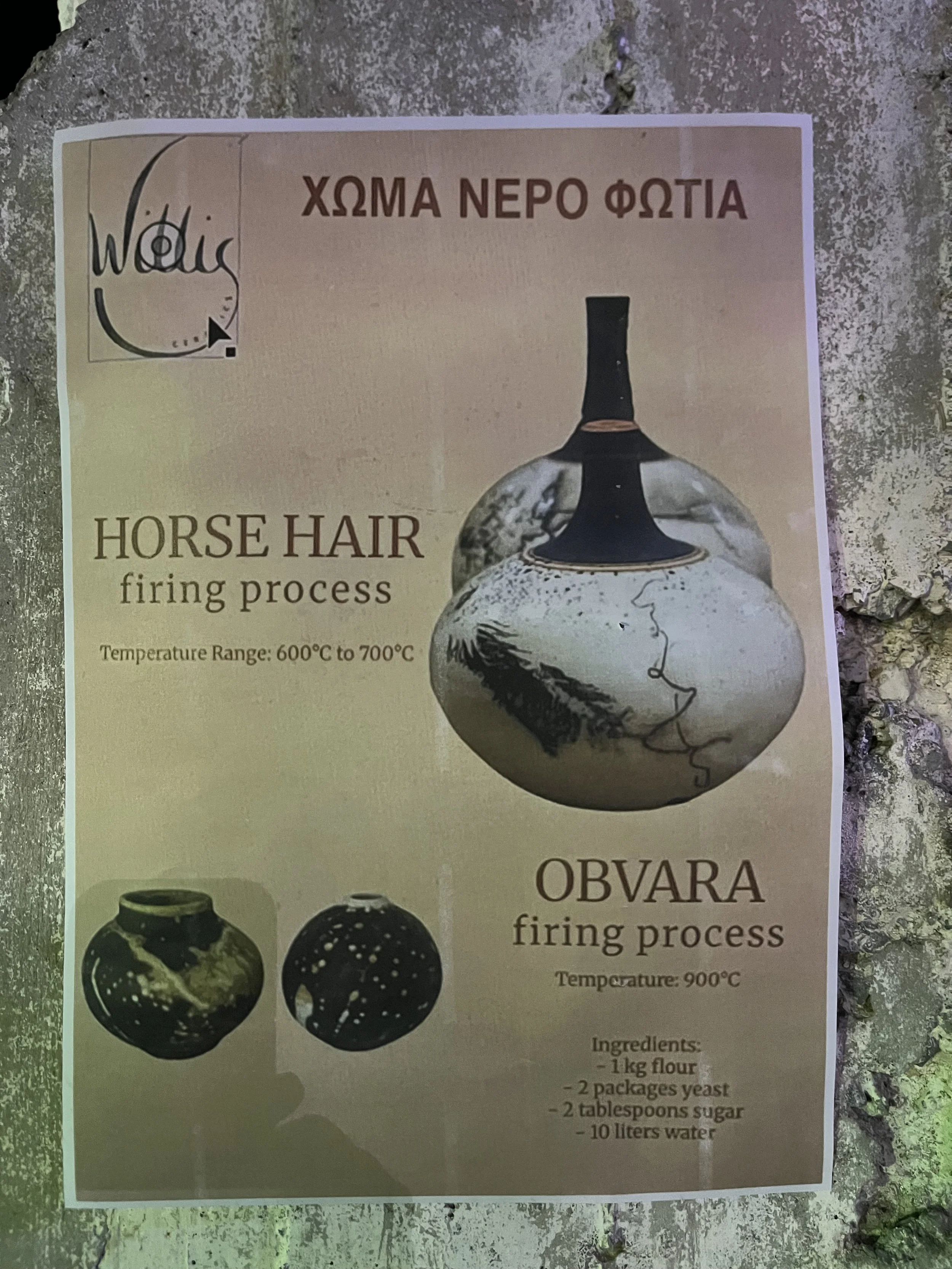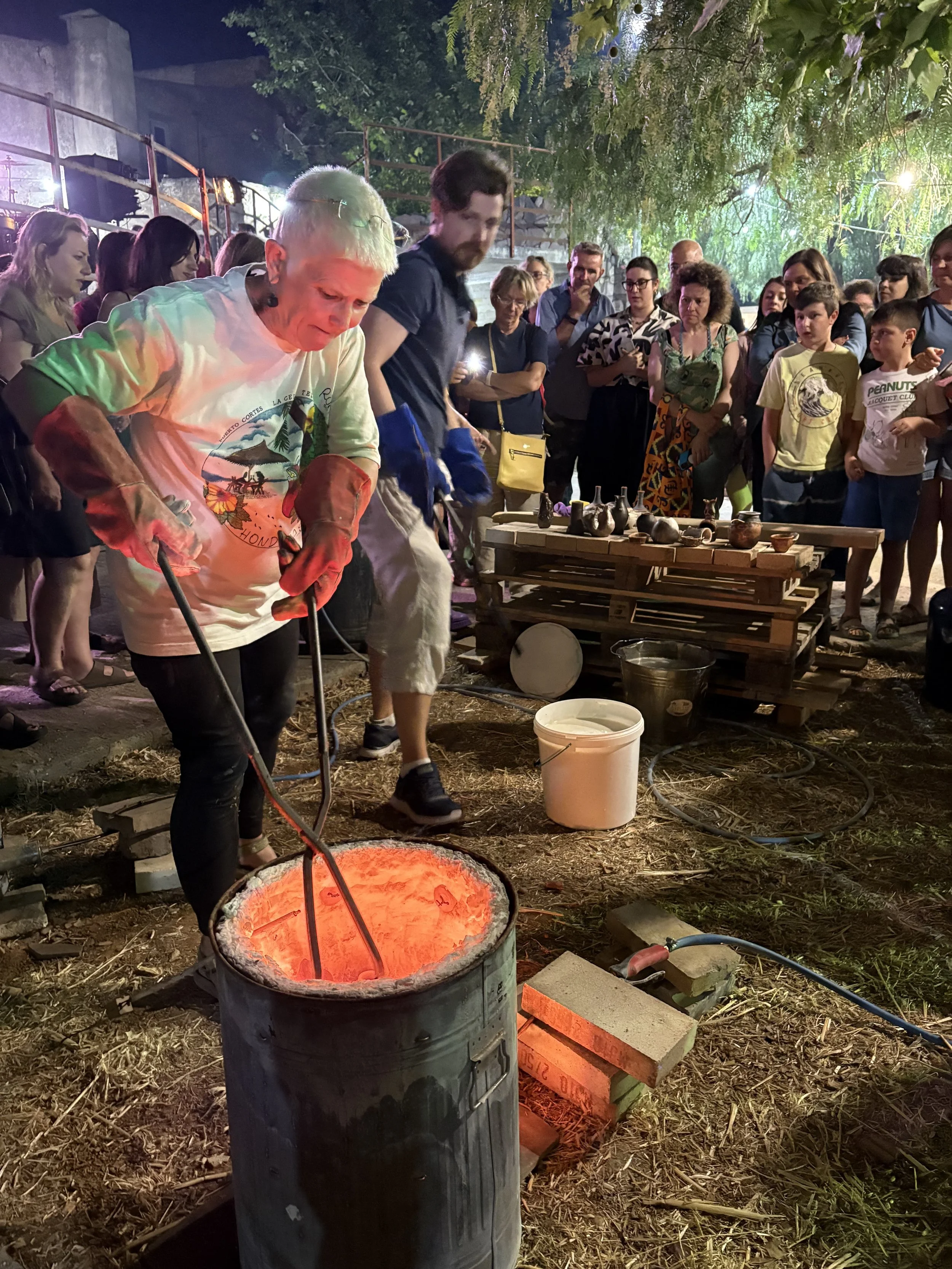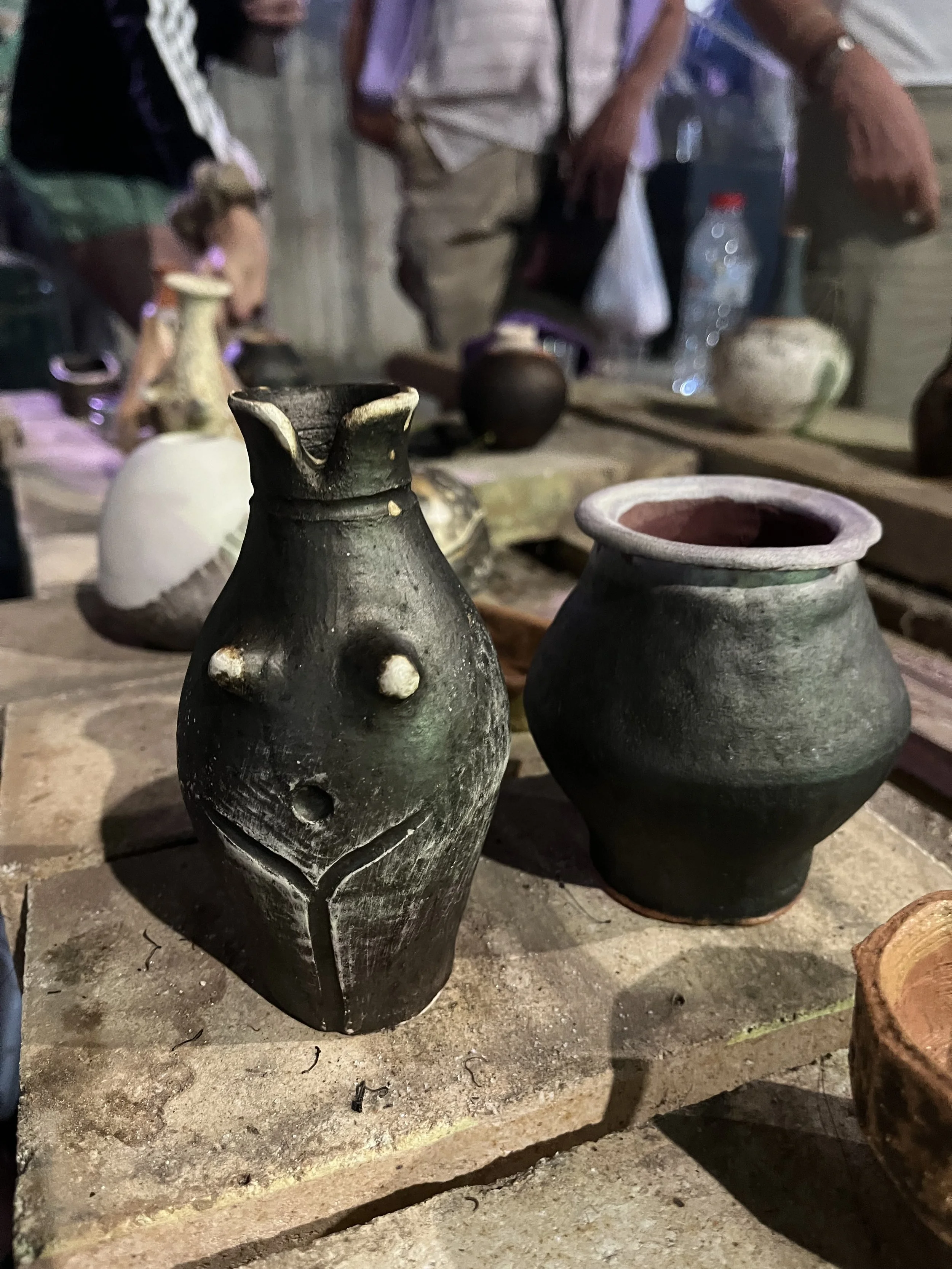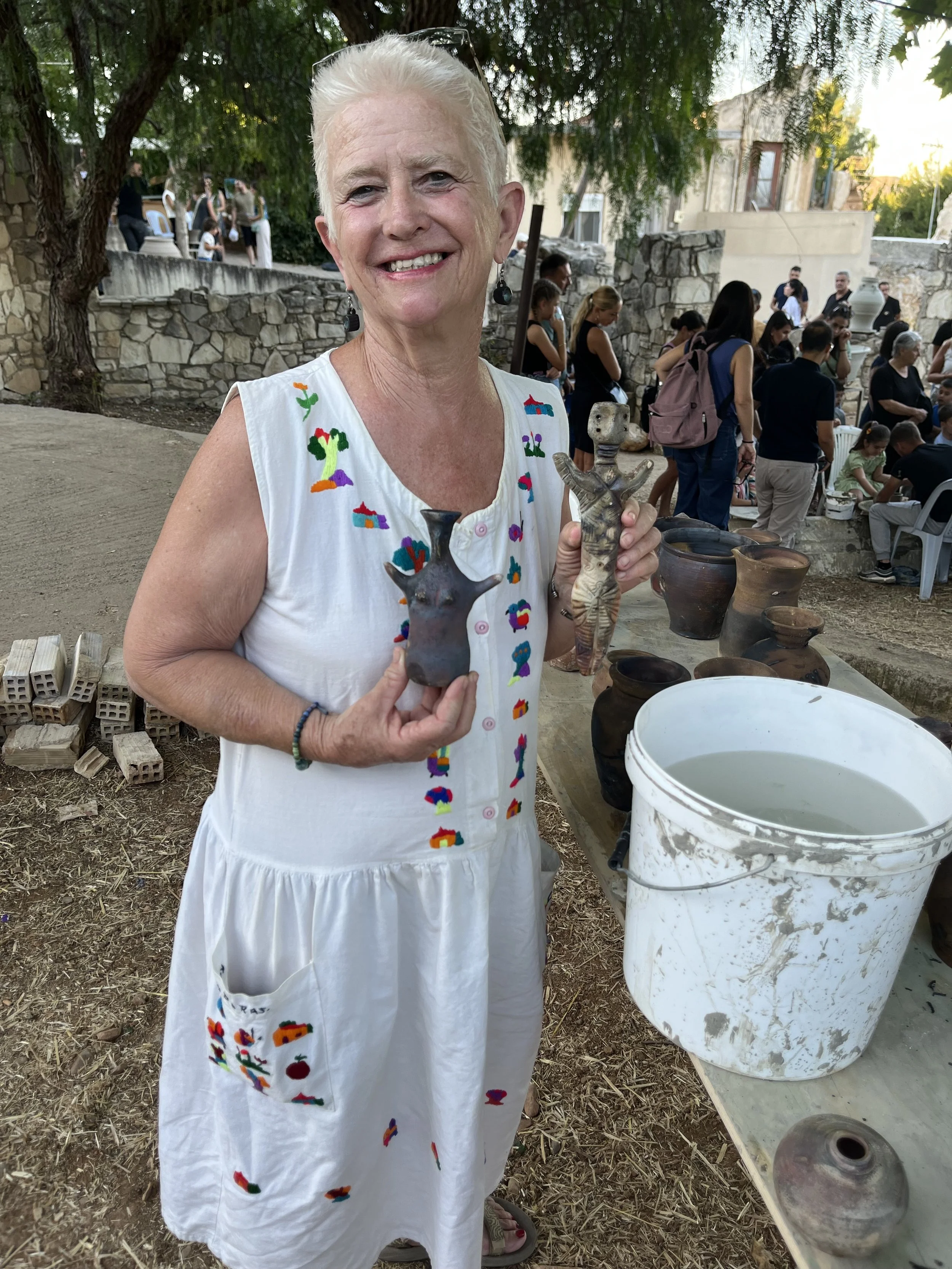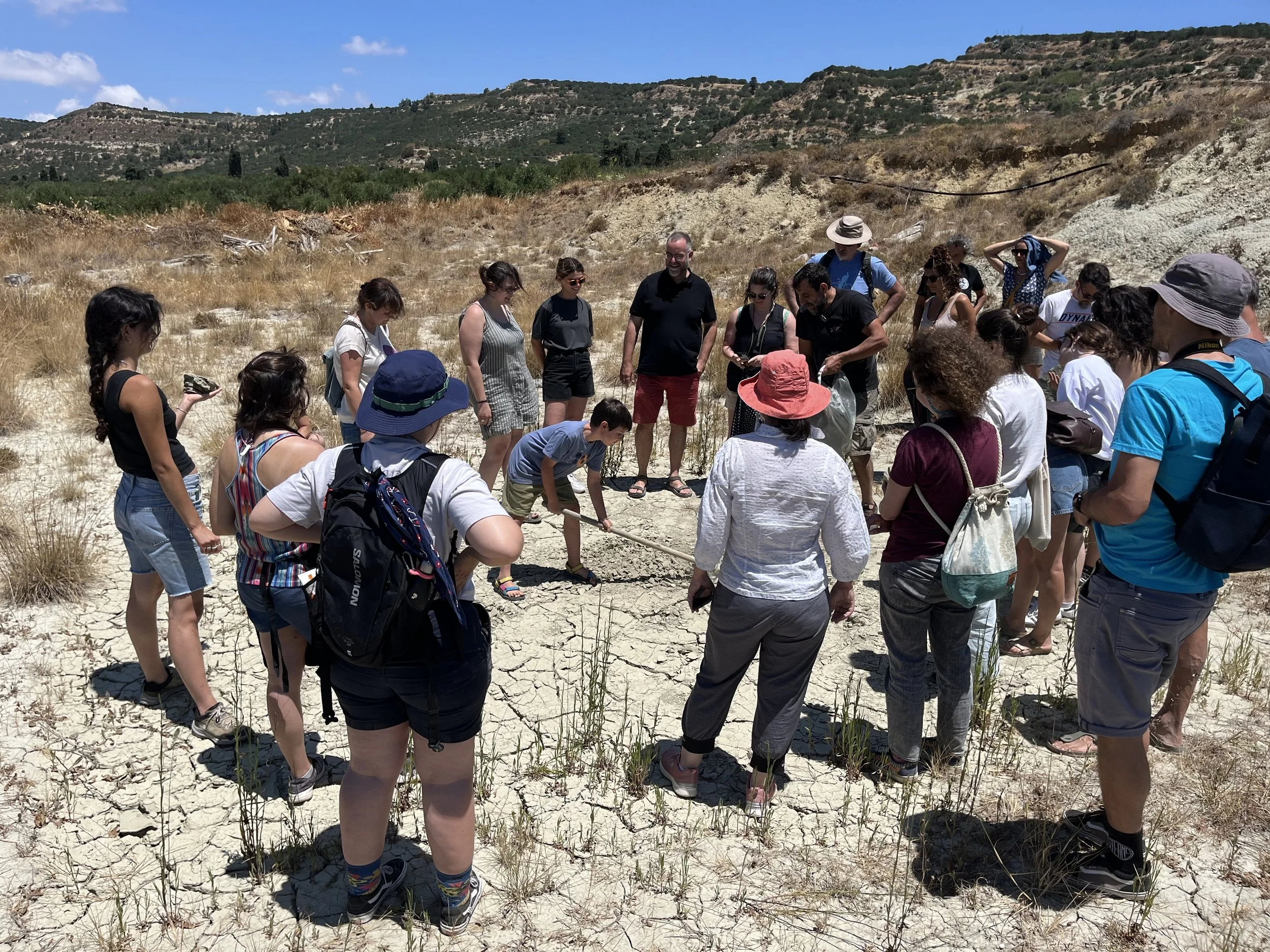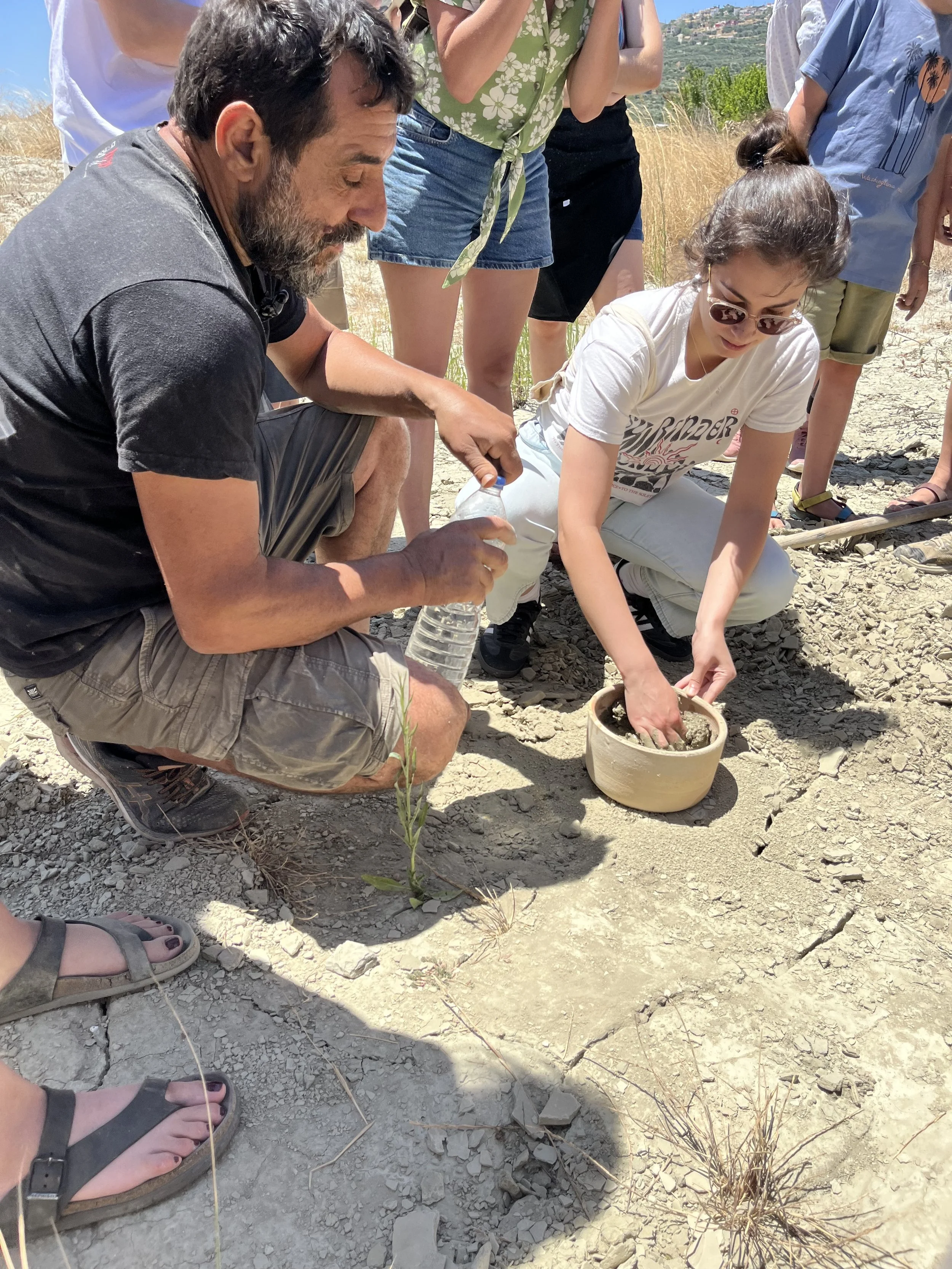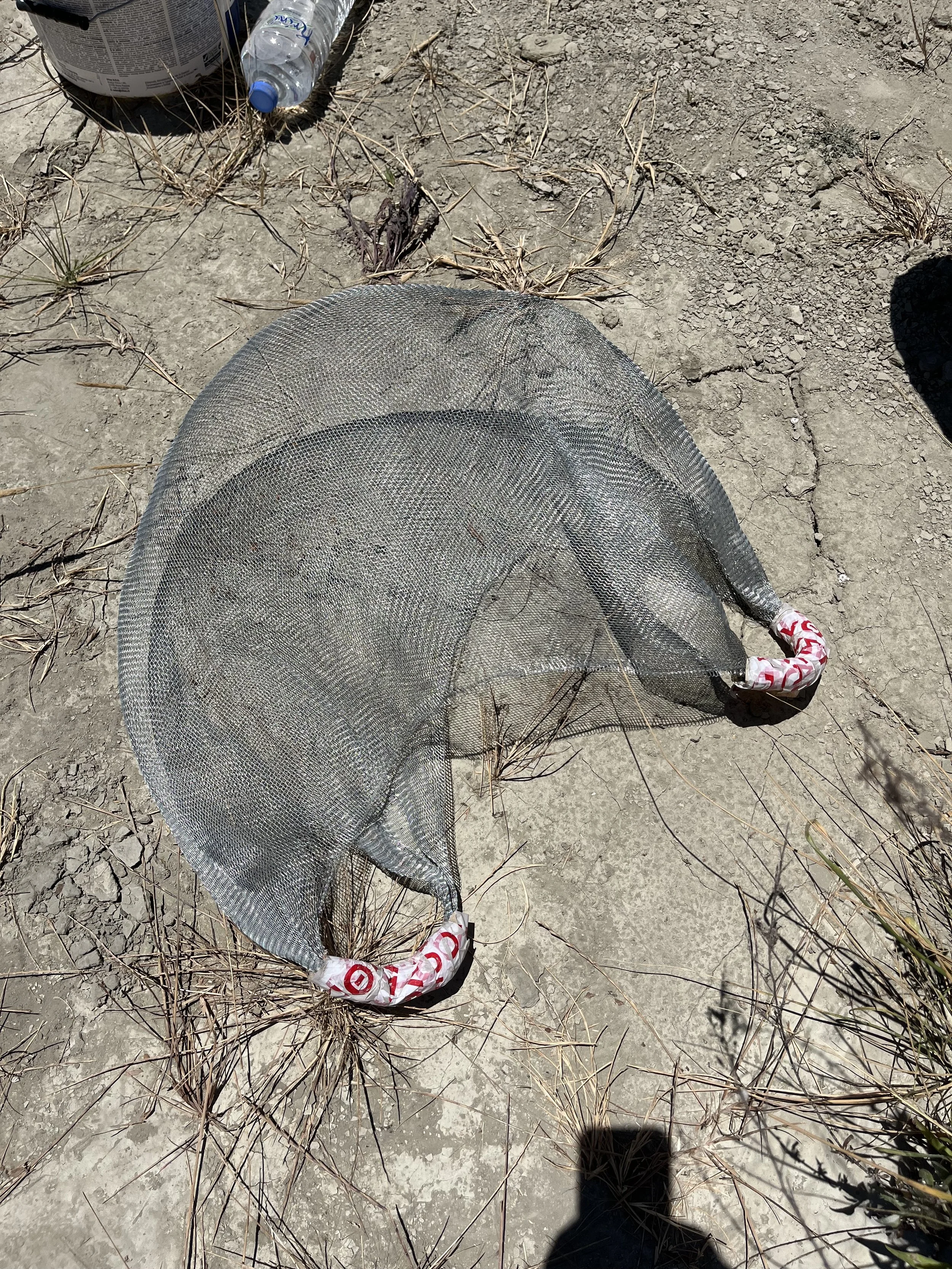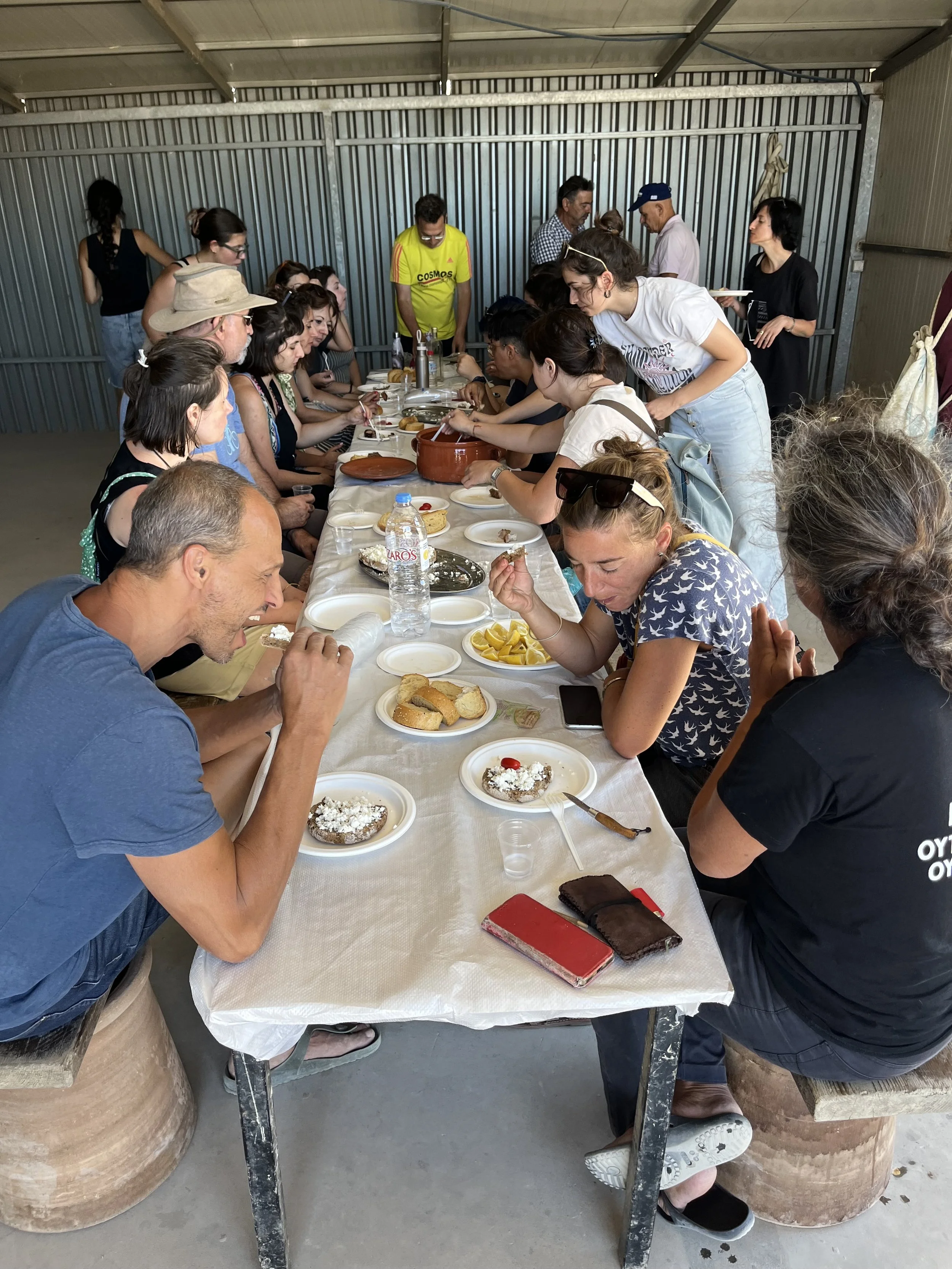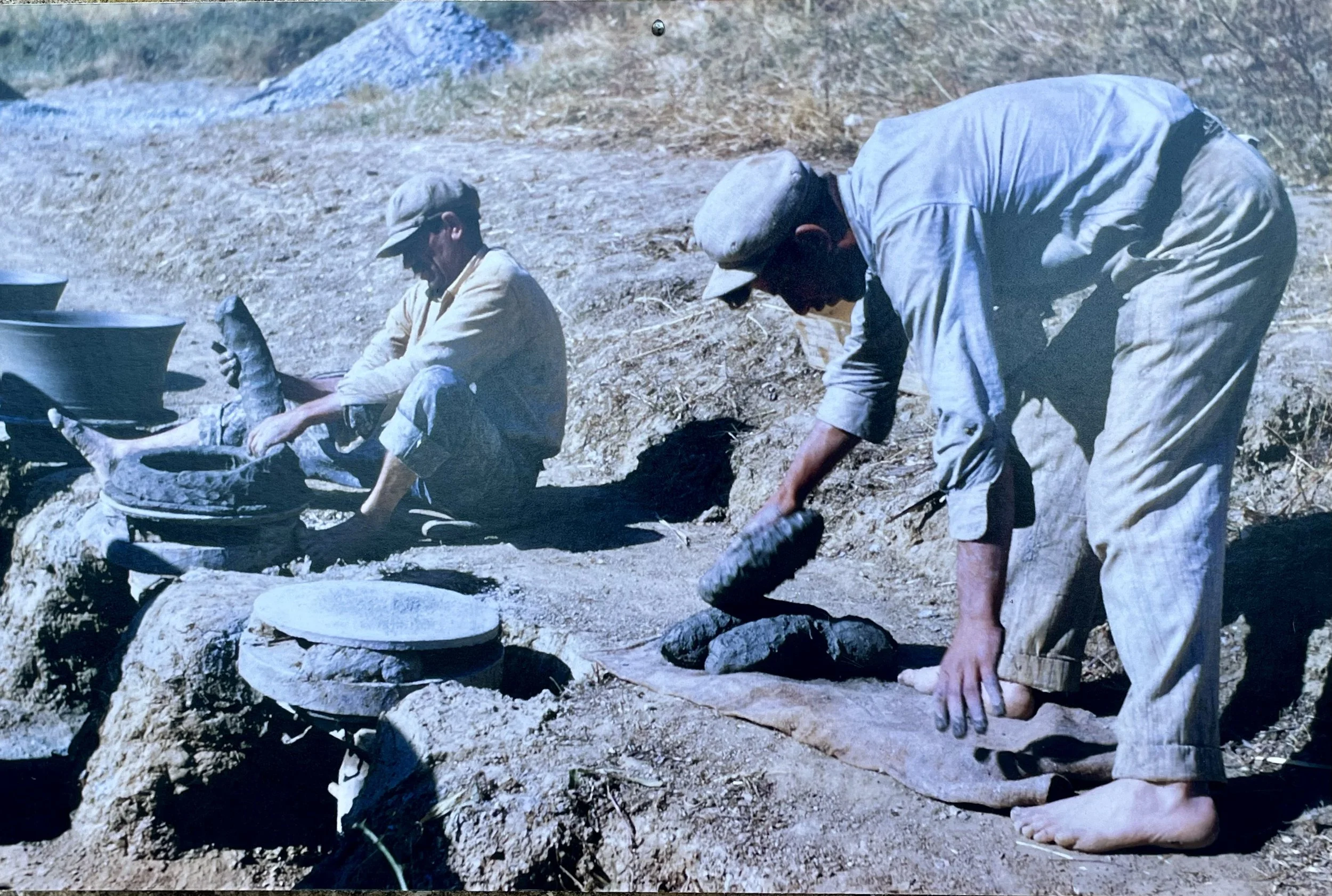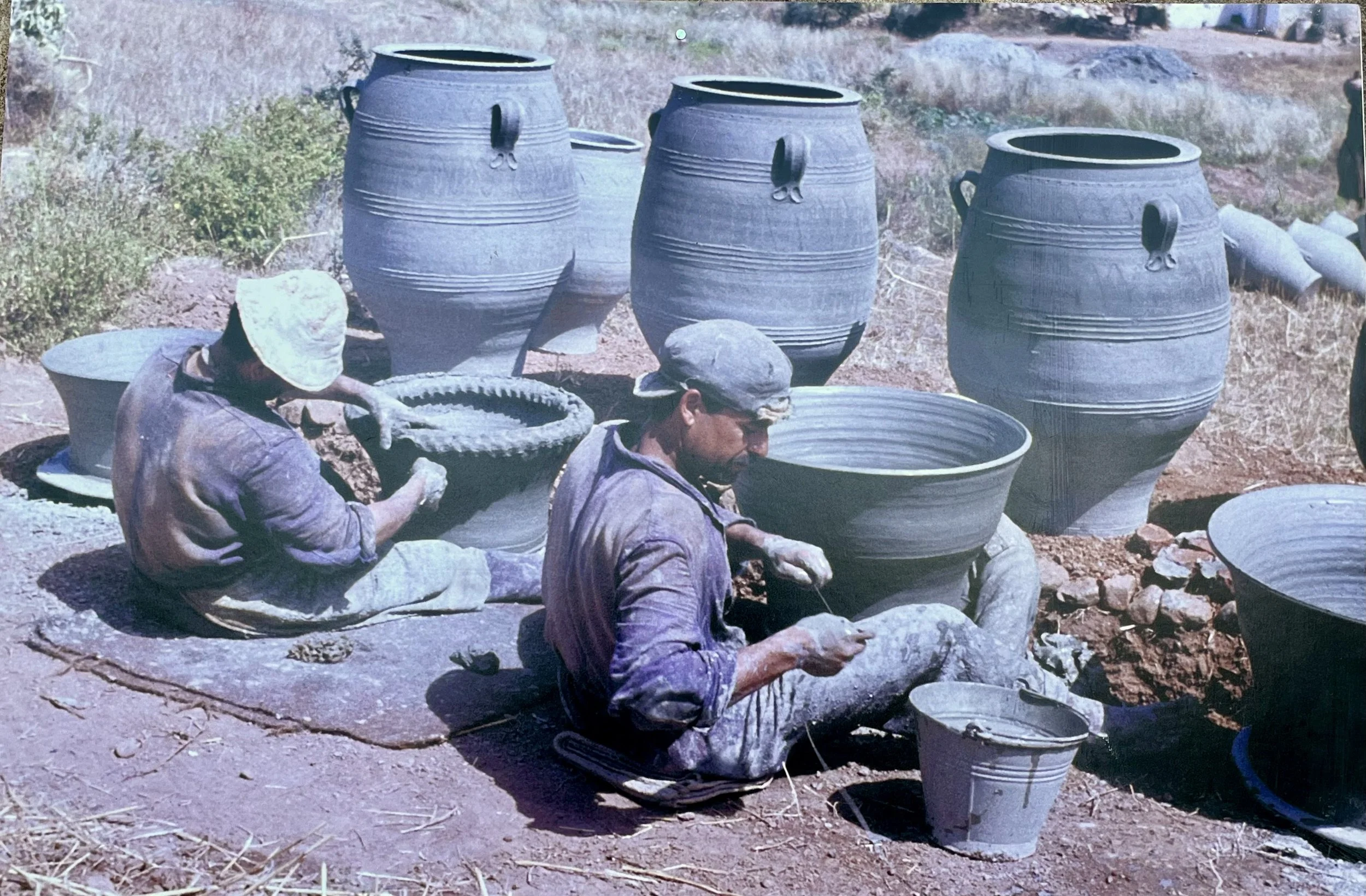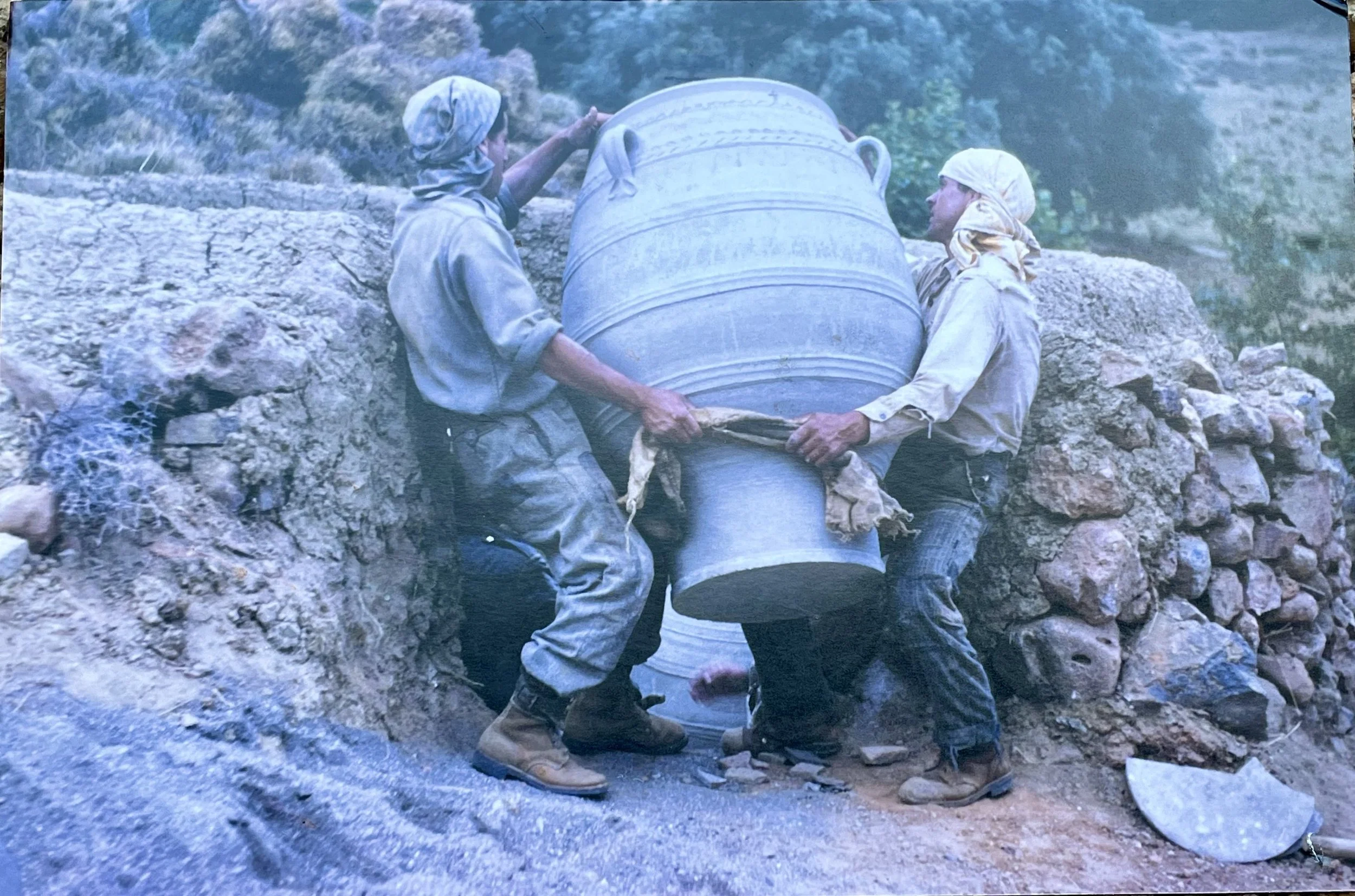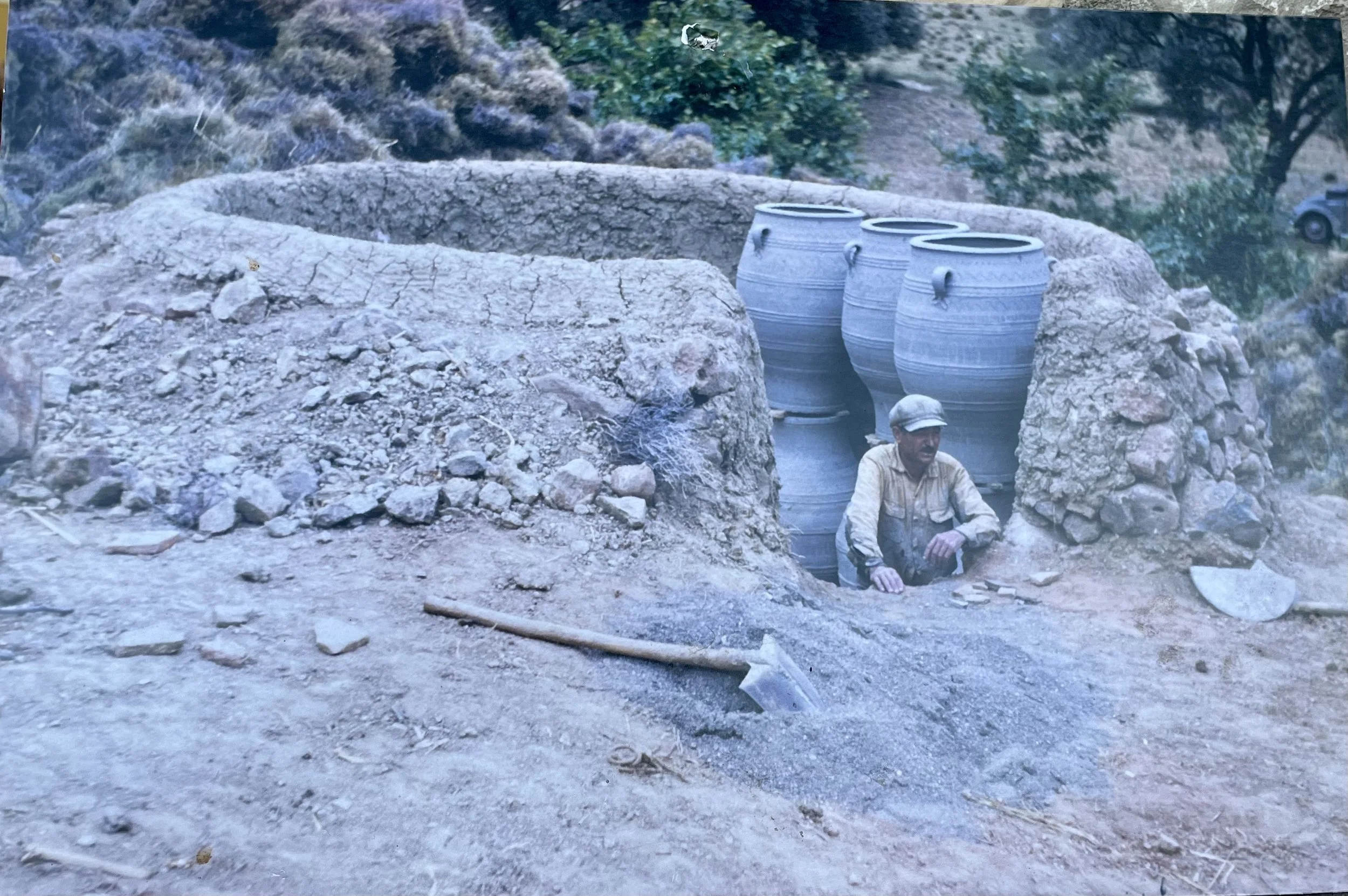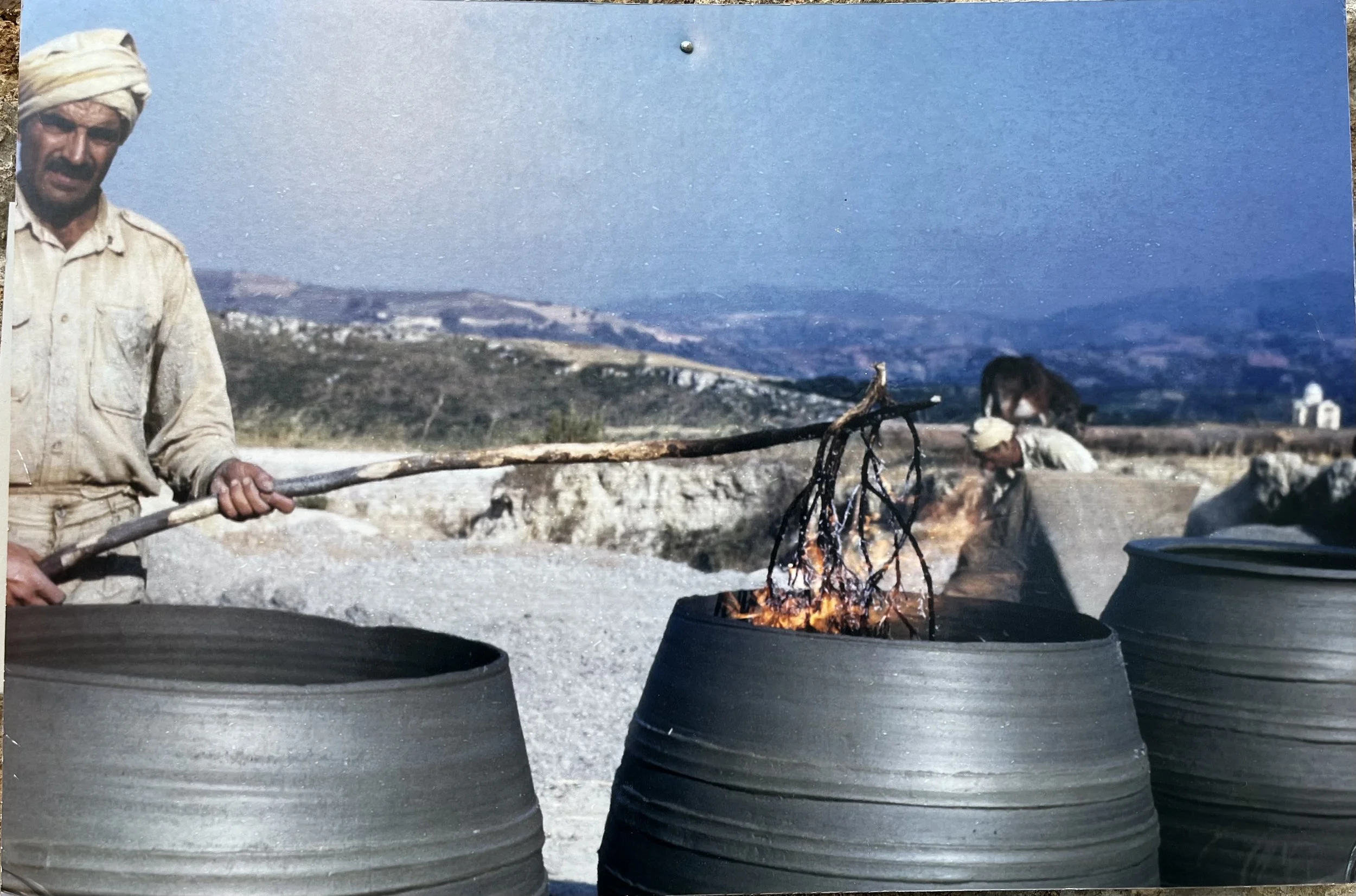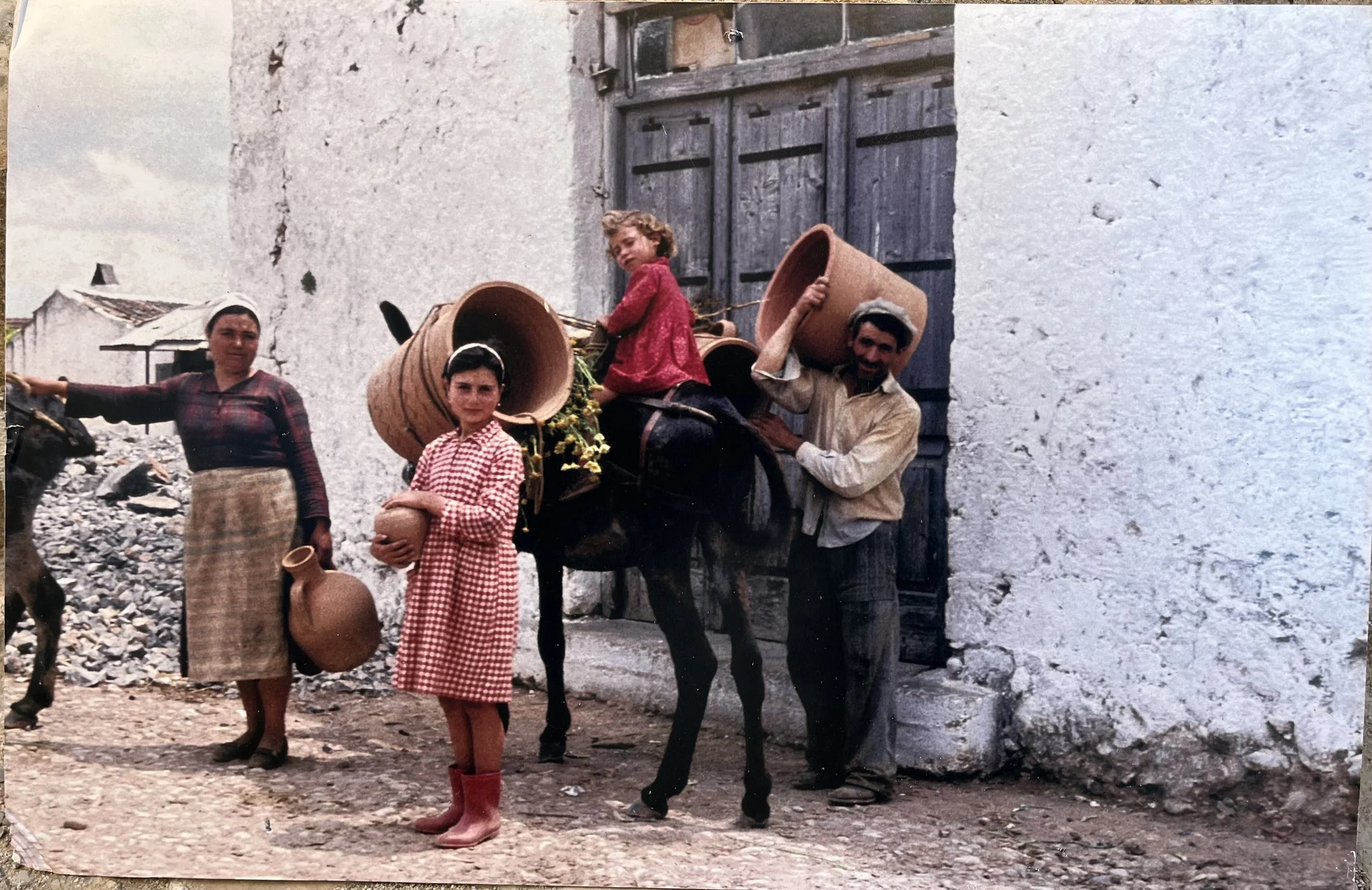Thrapsano Pottery Festival
Earth, Water,Fire is held in the town square of Thrapsano, Crete every summer on the first weekend of July. Celebrating Cretan Pottery from antiquity to the present, it brings together many organizations as well as the local potters and townspeople. A full program of lectures ,creative workshops and wheel throwing demos fill the four day schedule. I was lucky to attend the festival in 2024 and 2025-enjoy some of my photos from this joyful event!
There are many potteries the surround the town and if they are open you can stop and watch the potters at work. Many of the kilns are fired with compressed olive pits and the large vessels are made from a red clay from Crete. Most of the pots are unglazed, and are traditional shapes such as the pithos, a large storage container that was made in the time of the Minoans, as seen in the photo on the right from the archeological site of Malia.
Demonstrations at the Festival
Local potters demonstrated making large scale pots using the throw and coil technique. Giant soft coils are added to stiffened clay. A torch is used to harden the clay to add the next layer. The wheel is sometimes turned by people power!
This vessel is called a Boyiaspithos and traditionally was used as a dye pot for wool and clothing. In this video the potter is pulling a beautiful handle! See below his “step stool!”
Paper Kiln
There was definitely fire happening at the festival! This series of photos shows the construction of a paper kiln, led by Ilias Christopoulos, a well known Greek ceramic artist. The bisqued pieces are stacked on top of a rebar grid and wrapped in chicken wire, then surrounded with wood branches and finally layers and layers of paper brushed with clay slip are layed over the top, forming a shell. Charcoal is lit under the kiln, then it is gently lowered down to the ground and the air input is mostly closed off with a layer of sand. The kiln is then left to burn all of the fuel. The colorful flames coming from the opening in the top is the result of copper, cobalt and iron sulphate washes which were applied to the pieces.
Traditional Wood Kiln
Under the leadership of archeologist potter Nikos Liaros, a wood fired kiln was constructed and fired by participants and students. The design of the kiln is similar to the traditional updraft kilns used in Greece: a keyhole shaped structure in which the wood is fed below and draws upward through the stack of pots. The dragon head chimney pot was built a few years before and is saved and used in the reconstruction of the kiln for each annual festival. The kiln reached a temperature of about 1000* C.
Obvara Firing, demonstrated by Christine Willis
A traditional Balkan technique, the pots are heated in the kiln to arounbd 800*C, pulled out with tongs and dipped in the flour and yeast mixture, and then quenched in water. The mixture burns and fuses on the surface, creating interesting rich color and pattern. It is thought that this technique was discovered accidentally in the middle ages, possibly when an unglazed pot fell into a fermenting brew.
Native Clay of Thrapsano At the 2024 festival local potter Michalis Choulakis facilitated a clay expedition in an area down the road where clay was dug and processed. (These days the pottery workshops get the clay pre-pulverized in super sacks and mix it with water. It is dug in the southern area of Crete-I think….I could not find out exactly where it came from, only from “down there”, possibly near Matala.) The tour started and ended at Michalis’ workshop, where a wonderful lunch was served after digging and processing the clay.
Raki and Dancing after lunch!
Historical Photos of Thrapsano Pottery Production
These photos were on display at the festival, though not identified or dated. I assume that they were maybe from the 1950’s or 1960’s? You can see the village of Thrapsano in the background and a similar clay bed to the one where we foraged for clay. You can also see how they worked outside with no roof over their heads! There is one photo with the large round kiln.



